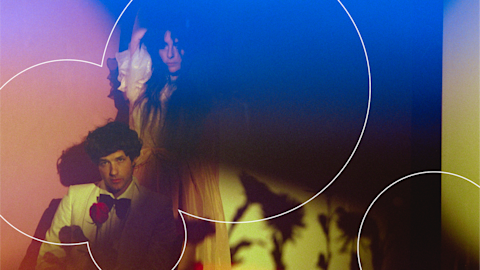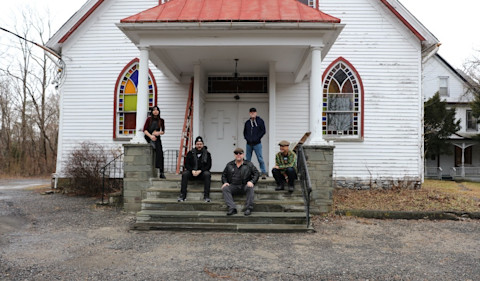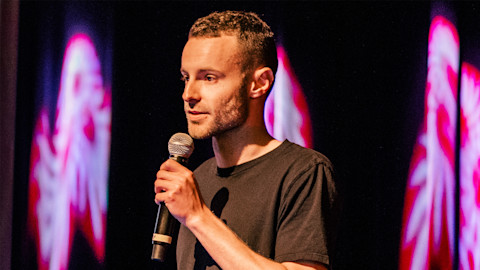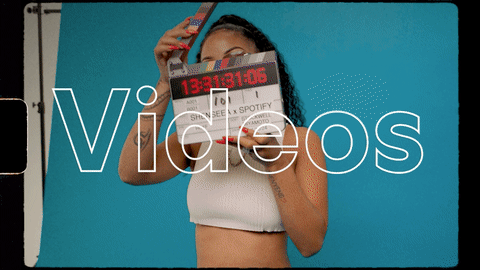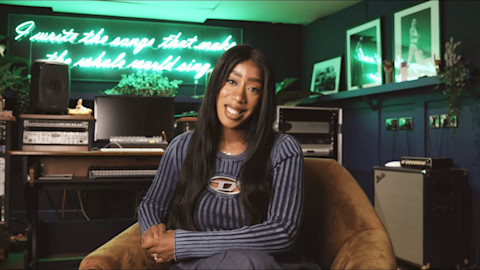In 2017, artist Moses Sumney garnered widespread acclaim with his full-length debut, Aromanticism. The singer, songwriter, and multi-instrumentalist subverted genre conventions with his eclectic approach to that recording, but the follow-up, græ, goes a step further. Besides being even more musically adventurous, with lushly orchestrated epics, intimate acoustic pieces, and guests like Thundercat and Jill Scott, græ challenges the very notion of how an album is unveiled. The 20-track, 66-minute work arrived digitally in two parts: the first half in February and the rest in May, at which point the full version was released on vinyl and CD.
We talked to Troy Carter from Sumney's management team and Phil Waldorf, the co-founder of Secretly Group, which includes Sumney's label, Jagjaguwar, about what it meant to think outside the box for græ's rollout and how tweaking the traditional release model can benefit artists.
Spotify for Artists: How did the idea to segment the release of græ originate?
Troy Carter: Moses thought of it as one body of work. Then, as the work grew, he wanted people to be able to spend time with it. The idea was, “Can I break this in two to be able to give people moments with the record? Let's give people this moment now, give them a little breathing room, and then let's serve them this side of the record.”
It's a very smart approach when you look at consumption through streaming. Even superfans aren't listening to whole albums from front to back, so when you make this epic piece of work with that many songs on it, you don't want to take the listener for granted in terms of their ability to digest.
Phil Waldorf: It's a big record. It asks a lot of a listener and it's incredibly rewarding when you delve into it. At the same time, he was challenging himself and his label to find a way of presenting it that made sense for the body of work.
How do you think this release method affects listeners’ experience?
Carter: He made it so it flows well both ways. If we only released Part 1, it would have been a great body of work. To marry it to Part 2 makes it even better. But that flow is in the listeners' hands. My guess is listeners cherry-pick songs and put them in playlists with other records, or listen on shuffle, or cherry-pick the main singles off the album then combine that with some other Moses songs from a previous project. Ultimately, the consumer is the one that controls it.
What advantages do you see from a marketing perspective?
Carter: Understanding from an analytic standpoint what consumption looks like, you can't assume that all your fans even know that it's out. You can't assume that the people that know it's out are actually gonna listen to it. So, to be able to get that second bite at the apple, to take the same music and recontextualize it, we're thinking about content and albums as a living, breathing thing.
How does the physical version fit into the plan?
Carter: The physical version is for the superfan. When people show up to buy vinyl, those are fans who want a piece of the artist in a very specific way. You're not finding passive listeners buying these.
What challenges did you face?
Waldorf: [Drolly] There was a global pandemic between the first and second parts. We had to adjust a couple of times because of that.
Carter: People were trying to figure out the logistics: ‘How do you explain this to [Digital Service Providers]? How do these two bodies of work merge together? How do you explain it to press from a review standpoint? Do you get them to embargo so they review on the second release? Are they experiencing it as one?’
There were a lot of logistics we thought through in terms of being able to explain it clearly to partners, just being crystal clear on how it's going to work from delivery to announcement to press releases to reviews and interviews. ‘What did we do around the first album vs. the second project? How are we thinking about singles? Are we releasing singles from both projects? How are we looking at sync?’
How do you feel it worked out?
Carter: We wanted to make sure, because there was so much excitement around Moses coming back with this first project, that the second [half] didn't feel like an afterthought, that press didn't cover it, or it didn't get the placement it needed with DSP partners. We wanted to make sure the second project could have its own moment as well, which ended up being accomplished.
Waldorf: The [publicists] had press rolling at the right moments. That long runway of building interest helped us drive a lot of physical preorders. So much of this is about what comes next. My hope is there's another 12 to 18 months of inflection points and reasons to continue to remind fans of the record [and] bring new people in. The record's out—it doesn't mean anybody's job is anywhere near done.
How do you think this approach could work for other artists?
Waldorf: A lot of that starts with the artist. You need to understand what they're trying to say. If it merits something unconventional, you figure out how to do it. I don't think you'd want to do it as a stunt or make it the story of a record. What you want is to think about the best way to present the music and kind of work backwards. Put those ideas in front of an artist, or let them put those ideas in front of a label, and let them push forward.
-Jim Allen
